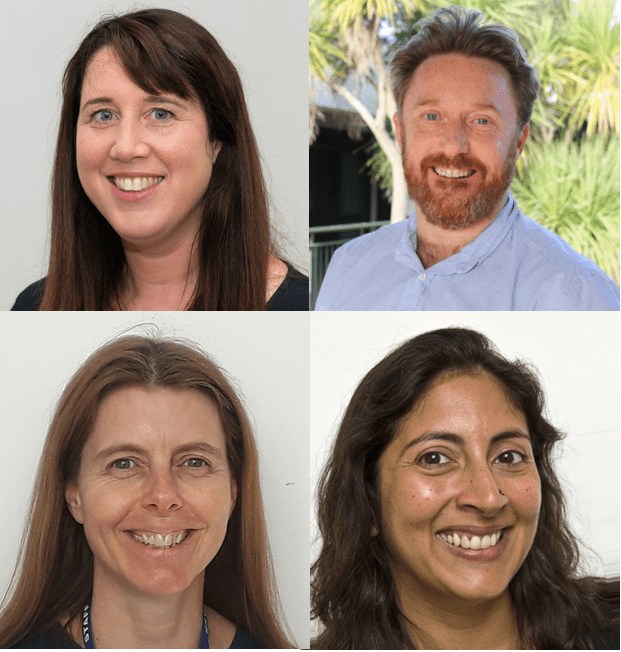What drew you to myrtle rust?
Beccy: I’ve always been drawn to protecting New Zealand from overseas disease threats. My entire career has been around biosecurity, especially threats to our forests.
Nick: Myrtle rust was on New Zealand’s doorstep for a long time. It’s incursion into Australia in 2010 put it even closer to home. It had the potential to cause damage to some very important species.
Maj: I study rust fungal relationships in Aotearoa New Zealand, both native and exotic. When we had a new rust coming to New Zealand, that was of interest to me, in terms of its own evolution and in terms of the huge impact it would have on our ecosystems.
Renee: Myrtle rust is a challenging and complex disease to understand and manage. My role as Communications Leader for BMR was a unique opportunity to contribute to a major research programme.
What do you find most challenging about the myrtle rust research space?
Beccy: It’s such a tough disease. Rusts in general are really difficult to manage and myrtle rust is more so because it impacts so many species.
Nick: We could have been more prepared. We could have undertaken research to optimize or even learn how best to seedbank some species. Now we’re doing everything out of urgency and it’s a lot of pressure.
Maj: This is a long-term project, and some of our work is not going to be applicable for 10-15 years. That’s hard because we can’t really offer immediate solutions to people.
Renee: There’s a lot going on and despite the best efforts of everyone involved, it can be difficult to keep track of who’s doing what.
How does BMR/NRT working together ease the challenges?
Beccy: Our collaboration is like a research pipeline. BMR picked up where MPI funding left off. NRT has built on BMR’s research. It’s a great evolution.
Nick: Beyond Myrtle Rust is a flagship research programme for myrtle rust and its impacts in New Zealand. NRT is a useful supplementary research component that fills some of those urgent knowledge gaps that they identify.
Maj: The beauty about having NRT is that they’re not locked into a programme of research like we are. They add value by adding bridging funding, and we do the same for them. Working in synergy, we’re able to study more aspects of the disease.
Renee: When it comes to biosecurity challenges, cooperation is more likely to produce useful results than competition. Working together will provide the best possible outcomes for New Zealand.
How do you see this collaboration facilitating myrtle rust research into the future?
Beccy: There’s some really exciting research happening, research that started before BMR, was continued by BMR and has been furthered by NRT. We could be looking at a very positive situation, in the near future, for the management of myrtle rust in New Zealand that provides real protection.
Nick: The collaboration helps joins up the scientific community. It helps compliment and link the wider interests in both programmes. It also adds value in terms of communication and engagement.
Maj: NRT is taking a community focus and getting different partners involved. That helps the message reach different audiences. I see the relationships they’ve made and those we’ve made being carried into future research projects together.
Renee: There will come a time, sooner than we’d like to think, when additional resources will need to be attained to build on this work. We will be stronger working together to advocate for these resources than we will be working in isolation.
